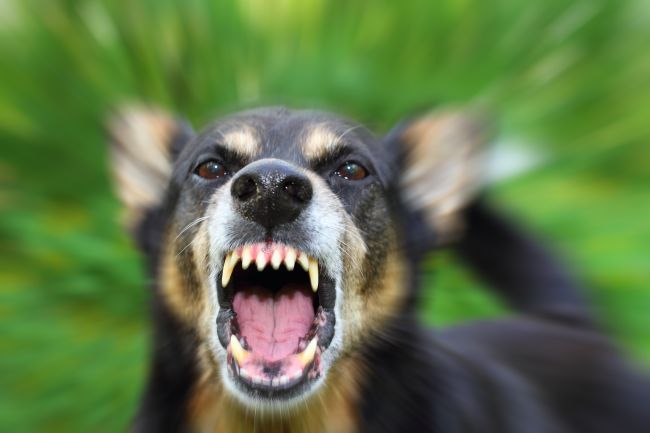 When someone describes a dog as being “aggressive,” we just assume that such behavior is part of the breed tendency or the dog’s personality. Seldom do we consider categorizing what kind of aggression he might be inclined to. Though canines are certainly less complex than humans when it comes to emotion and psychological motivations, there are still numerous individual types of aggression which determine why a dog is behaving a certain way. In order to improve pet training and understand your pup’s actions, first familiarize yourself with the types of canine aggression listed below.
When someone describes a dog as being “aggressive,” we just assume that such behavior is part of the breed tendency or the dog’s personality. Seldom do we consider categorizing what kind of aggression he might be inclined to. Though canines are certainly less complex than humans when it comes to emotion and psychological motivations, there are still numerous individual types of aggression which determine why a dog is behaving a certain way. In order to improve pet training and understand your pup’s actions, first familiarize yourself with the types of canine aggression listed below.
Displacement: This type of behavior is sometimes called “frustrated” aggression. This usually occurs when the dog is surprised, or experiences something unexpected when he is outside his own milieu. An example might be if the dog is on a walk with his owner, and another dog happens upon them suddenly in a close, unfamiliar place. In such cases, defensive snapping or barking might ensue.
Dominance: This refers to the instinctive response a dog may have in regards to something viewed as a threat. The dog feels threatened by what he perceives to be a stronger creature, and the anxiety builds into tension, causing aggressive reactions as he tries to gain mastery and dominance over whoever the imposing figure is, be it man or beast. If the dog owner does not take a leading hand over the situation, this triggers the dog to try to step in and take the position as the dominant picture.
Fear and Pain-Elicited: The phrase “cornered animal” describes the desperation a dog might feel when he is terrified, and feels uncertain how to protect himself or escape from danger. A frightened dog’s behavior may become increasingly unpredictable the more afraid he feels, and may even result in a bite or attack. A dog may also act extremely defensive, wanting space if he is wounded, in pain, or suffering from a severe health issue. The pain (similar to the fear) makes the animal feel vulnerable and exposed, meaning his instincts to self-protect are heightened, often resulting in aggressive actions.
Intra-Sex: This instinctive form of aggression is spurred by hormonal influences, or even similar feelings as that of territorial aggression. The term describes male dogs acting defensively to other males; females acting aggressively to other females.
Predatory/Intra-Special: Dogs are natural hunters and chasers that often experience aggressive instincts toward other species. We are familiar with how often dogs are aggressive towards cats and squirrels, and even toward their own canine kin, if the breed is small and helpless, in an instinct known as predatory drift.
Maternal: Even docile female dogs who are nursing or protecting their young can become defensive by barking, growling and snapping to keep threatening or intrusive hands away from her litter.
Object Possessive/Territorial: When multiple dogs reside in the same place, sharing family members, beds and toys, they can tend to get possessive over items of choice. Usually the larger dog will exert authority over the smaller, even ripping the toy out of the little dog’s mouth, or hogging the bed all to himself and snapping at any challenge. This usually occurs when there is a need of boundaries to be set in place. Territorial aggression is incited when a dog feels the need to guard or protect either his family, toys, land or home from intruders or even visiting dogs. The hackles may go up, and fierce barking begin when a dog feels his territory is being impinged upon.
Learned Behavior: Unfortunately, aggressive behaviors that are learned (such as the “attack” command) result from a dog experiencing positive reinforcement when he has exercised a certain action. This can be beneficial when a dog is guarding his home, but is negative if the canine has inadvertently been taught that biting will get him his way, or will effectively intimidate humans.
It is imperative that dog-owners learn why their pets behave a certain way, and engage with them properly to work against these tendencies.. This might include giving them the distance, respect and space they need, or reprimanding them when the aggression becomes a threat, is rebellious, or goes too far.

